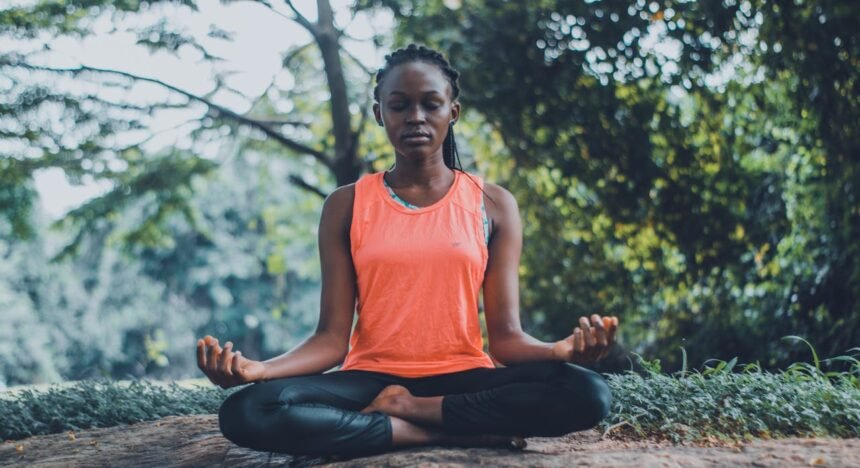In our increasingly fast-paced world, finding moments of peace and clarity has become more essential than ever. Mindful meditation, a practice rooted in ancient wisdom yet perfectly suited to modern life, offers a powerful tool for cultivating inner calm and mental wellbeing. This comprehensive guide will explore the fundamentals of mindful meditation, providing you with practical techniques and insights to begin or deepen your meditation journey.
Understanding Mindful Meditation
Mindful meditation is the practice of focusing your attention on the present moment whilst acknowledging and accepting your thoughts, feelings, and bodily sensations without judgement. Unlike concentration meditation, which involves focusing on a single object, mindful meditation encourages a broader awareness of your immediate experience.
The roots of mindful meditation can be traced back to Buddhist traditions, where it’s known as “Vipassana” or insight meditation. However, the practice has been adapted and secularised for contemporary use, making it accessible to people of all backgrounds and beliefs. Research has consistently shown that regular meditation practice can reduce stress, improve emotional regulation, and enhance overall mental health.
The Science Behind Mindful Meditation
Scientific studies have revealed remarkable benefits of consistent meditation practice. Neuroimaging research demonstrates that regular meditation can literally reshape your brain, a phenomenon known as neuroplasticity. The prefrontal cortex, responsible for executive functions like decision-making and emotional regulation, becomes more active and better developed in experienced meditators.
Furthermore, meditation has been shown to reduce activity in the amygdala, the brain’s “alarm system” responsible for stress responses. This neurological change translates to improved stress management and reduced anxiety levels in daily life. Studies have also indicated that meditation can boost immune function, lower blood pressure, and improve sleep quality.
For those interested in exploring more about wellness practices and their scientific backing, comprehensive wellness resources provide valuable insights into various health-promoting activities.

Getting Started with Mindful Meditation
Beginning a meditation practice doesn’t require special equipment or extensive training. The beauty of mindful meditation lies in its simplicity and accessibility. Here’s how to start your journey:
Creating Your Meditation Space
Choose a quiet, comfortable location where you won’t be disturbed. This could be a corner of your bedroom, a garden spot, or even a comfortable chair in your living room. The key is consistency – using the same space regularly helps signal to your mind that it’s time to meditate.
Ensure your chosen space is clean and clutter-free. Some practitioners find that adding elements like a cushion, blanket, or even a small plant can enhance the meditative atmosphere. However, remember that the external environment is less important than your internal commitment to the practice.
Basic Posture and Positioning
Sit comfortably with your spine straight but not rigid. You can sit on a chair with your feet flat on the floor, cross-legged on a cushion, or even lie down if sitting is uncomfortable. The important thing is maintaining alertness whilst being relaxed.
Place your hands naturally on your knees or in your lap. Close your eyes gently or maintain a soft, downward gaze. Allow your facial muscles to relax, releasing any tension in your jaw, forehead, or around your eyes.
Fundamental Mindful Meditation Techniques
Breath Awareness Meditation
The most accessible form of mindful meditation focuses on the breath. Begin by taking a few natural breaths, then simply observe your breathing without trying to change it. Notice the sensation of air entering and leaving your nostrils, the rise and fall of your chest, or the expansion and contraction of your abdomen.
When your mind wanders – and it will – gently redirect your attention back to your breath. This isn’t a failure; it’s part of the practice. Each time you notice your mind has wandered and bring it back to the breath, you’re strengthening your mindfulness muscle.
Body Scan Meditation
This technique involves systematically focusing on different parts of your body, starting from your toes and moving upward to the crown of your head. As you focus on each body part, notice any sensations, tension, or areas of relaxation without trying to change anything.
Body scan meditation helps develop body awareness and can be particularly effective for releasing physical tension. It’s an excellent practice for those who find it challenging to focus solely on the breath.
Loving-Kindness Meditation
This form of meditation involves cultivating feelings of goodwill and compassion, first toward yourself and then extending these feelings to others. Begin by silently repeating phrases like “May I be happy, may I be healthy, may I be at peace.”
Gradually extend these wishes to loved ones, neutral acquaintances, difficult people in your life, and finally to all beings everywhere. This practice can help reduce negative emotions and increase feelings of connection and empathy.
Developing a Consistent Practice
Consistency is more important than duration when establishing a meditation practice. Starting with just five to ten minutes daily is perfectly adequate. As you become more comfortable with the practice, you can gradually extend your sessions.
Many practitioners find it helpful to meditate at the same time each day, such as first thing in the morning or before bedtime. This creates a routine that becomes second nature over time. Consider setting a gentle alarm or using a meditation app to time your sessions initially.
Track your progress without becoming overly focused on outcomes. Some days will feel more successful than others, and this variability is entirely normal. The key is showing up consistently, regardless of how the meditation feels.
Common Challenges and Solutions
Dealing with a Busy Mind
One of the most common concerns new meditators express is having a “busy mind.” It’s important to understand that having thoughts during meditation is normal and expected. The practice isn’t about stopping thoughts but rather changing your relationship with them.
When thoughts arise, acknowledge them without judgement and gently return your attention to your chosen focus point. Think of thoughts as clouds passing through the sky of your awareness – observe them, but don’t chase them or push them away.
Physical Discomfort
If you experience physical discomfort during meditation, it’s perfectly acceptable to make small adjustments to your posture. The goal is alert relaxation, not enduring pain. Over time, your body will adapt to longer periods of stillness.
For those with chronic pain or mobility issues, meditation can still be practised in whatever position feels most comfortable, including lying down or sitting in a supportive chair.
Advanced Practices and Variations
As your meditation practice develops, you might explore different techniques or traditions. Walking meditation involves bringing mindful awareness to the act of walking, focusing on each step and movement. This can be particularly beneficial for those who find sitting meditation challenging.
Mindful eating meditation involves paying full attention to the experience of eating, noticing flavours, textures, and sensations. This practice can improve your relationship with food and enhance appreciation for nourishment.
Integrating Mindfulness into Daily Life
The ultimate goal of meditation practice is to bring mindfulness into everyday activities. Throughout your day, try to pause periodically and take a few conscious breaths. Notice your surroundings, your emotional state, and your physical sensations.
This integration of mindfulness into daily life is where the real transformation occurs. Regular practice helps you respond to life’s challenges with greater clarity and emotional balance rather than simply reacting automatically.
For additional guidance on maintaining wellness practices and creating sustainable healthy habits, exploring expert wellness advice can provide valuable support for your journey.
Conclusion
Mindful meditation offers a practical and accessible path to greater peace, clarity, and emotional wellbeing. By starting with just a few minutes daily and maintaining consistency, you can develop a practice that supports you through life’s ups and downs.
Remember that meditation is called a “practice” for a reason – there’s no perfect way to meditate, and every session offers an opportunity for growth and learning. Be patient with yourself, celebrate small victories, and trust in the process.
Whether you’re seeking stress relief, improved focus, or simply a few moments of peace in your day, mindful meditation provides tools that become more powerful with time and practice. Begin today, start small, and allow this ancient practice to enrich your modern life.
The journey of a thousand miles begins with a single step, and your path to greater mindfulness and wellbeing starts with your very first conscious breath.






